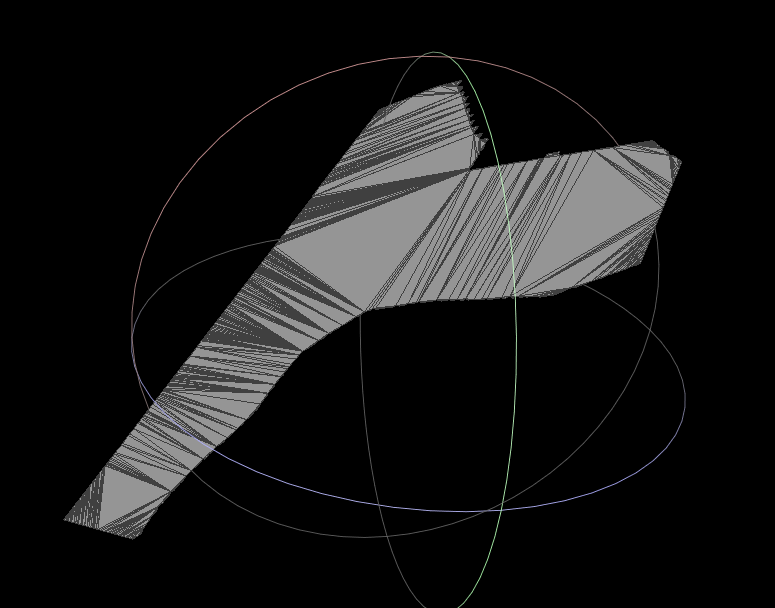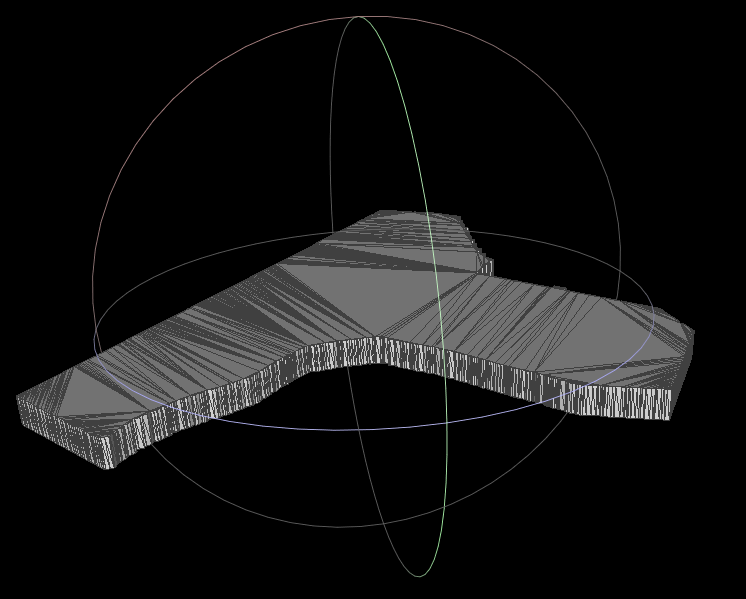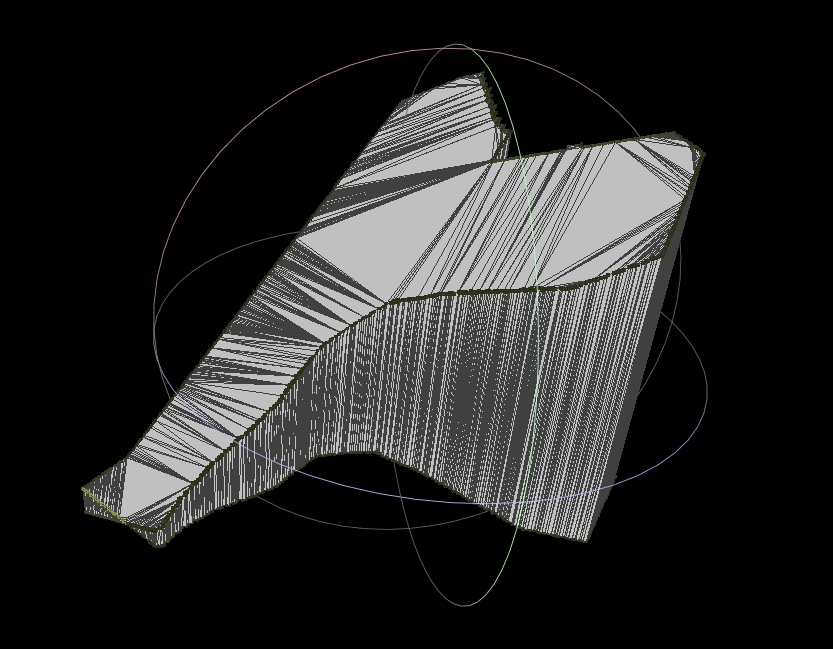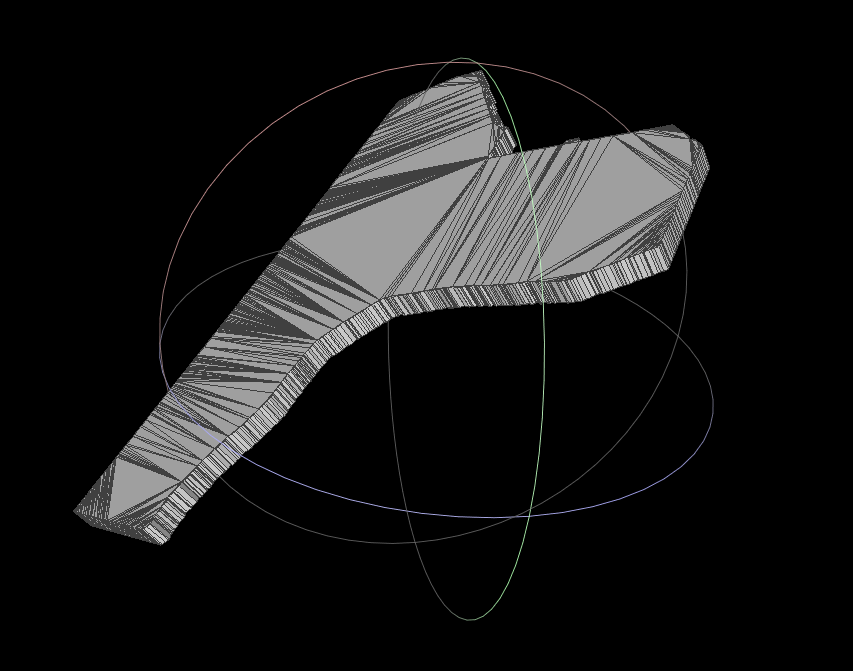Dear all,
I also would like to know how to achieve an extrusion for 3D surfaces. Please help. Here an example for a better explanation of my problem:
1.) Input mesh plane:

2.) Output using trimesh extrusion for 2D triangulation (ignoring z values):

3.) Output using the proposed approach of @dt99jay for considering the z values:

4.) Expected result (I used the extrusion function in Blender for this case):

Do you know how I can get the same result such as in 4.) with trimesh or any other python library?


Is there a correct way to extrude a 2.5/3D surface? At the moment I'm extruding a 2D surface, then editing the 'original' vertices (i.e. those left at z=0) with the shape of my surface:
Thanks for Trimesh – it's very handy to have a pure python mesh library.